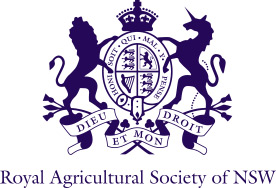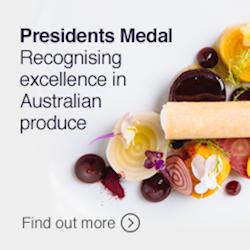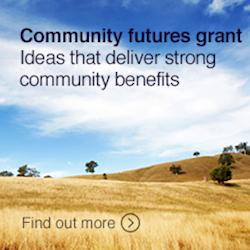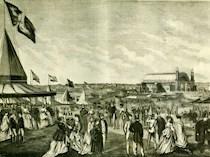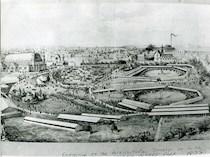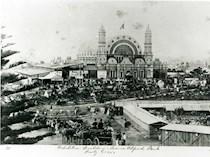Explore our history
In many ways, the history of the Royal Agricultural Society of NSW echoes that of the nation’s history more broadly. The social, political, economic and climatic conditions of each passing era have all left their marks on the RAS and influenced its activities. So when you explore our story, there’s a good chance you’ll find something that throws a light on Australia’s many stories too. From its earliest beginnings at Parramatta to the present day, the RAS has endured by responding to – and encouraging – change.
1869
Metropolitan Inter-Colonial Exhibition
In pouring rain on 4 May 1869, the first ever city Show opened in Sydney at Cleveland Paddocks, later known as Prince Alfred Park. Styled as the Metropolitan Inter-Colonial Exhibition, the four-day affair injected new life into the Agricultural Society of NSW – and the city.
Attendances at the Parramatta Show had been poor for several years. The rustic gatherings no longer appealed to Sydney’s fast-growing population, which had prospered from the gold rush; and for distant farmers the effort to get to Parramatta with stock or produce was not worthwhile. Via expanding rail networks, travel to a Sydney show was an easier proposition.
The change was a resounding success. Over 37,000 people turned up to enjoy the new spectacle, where items of colonial manufacturing were also displayed, along with fine art. Culture had arrived at the Show.
Reform
While the Society relocated, it also reformed. It sought a new, colony-wide relevance, broadening membership across the regions, and for the first time electing a sprinkling of businessmen and scientists as Councillors.
Putting itself on a thoroughly professional footing, the Society opened a city office and library in George Street, where members could attend lectures and share information. The first full-time, paid administrator was also appointed.
After incorporation by an act of parliament in 1869, the Society was cleared to undertake more complex business arrangements. Negotiations immediately began with the Sydney Municipal Council for the provision of a big new exhibition building which the Society would rent for its shows.
'As all the branches of COLONIAL INDUSTRY are so nearly allied to agriculture, it has been deemed desirable to embrace them…'
- 1868 prize schedule
'The huge monster is perfectly docile, and walks about the grounds with a care that might be advantageously adopted by bi-ped visitors.'
- Report on Prince Alfred’s pet elephant at the 1870 Show, Australian Town and Country Journal, 24 September 1870.
1870 -1879
Showing off
During this period, the Society continued to experiment with attractions while maintaining its emphasis on livestock, farm produce and farm machinery. Innovations included special displays from other colonies and countries; and entertainment in the form of musical events, balloon flights and floral shows.
Competitions and classes expanded rapidly to more closely resemble the range we see at the Show today, including at different times:
- horse jumping
- cage birds
- alpacas
- arts
- schools’ competitions
- fish products
- olive oil
1881
Last Show at the Park
In 1879 the Agricultural Society responded enthusiastically to the opportunity to be involved in the organisation of an International Exhibition in Sydney. But unrealistic expectations, inadequate funds and political discontent lead to a breakdown in relations and the NSW Government largely took over the event. A stunning new building called the Garden Palace was erected in the Botanic Garden to house the exhibition, which ran for seven months, from September 1879 to April 1880.
While the International Exhibition was a major coup for Sydney and Australia, the Agricultural Society’s own events suffered. After a lacklustre final Show in 1881, the Society could no longer afford the lease on Prince Alfred Park. It was time to look for a new home and a new beginning.
Search our Museum
Something to add?
Do you have an artifact or story from
RAS NSW history to add?
